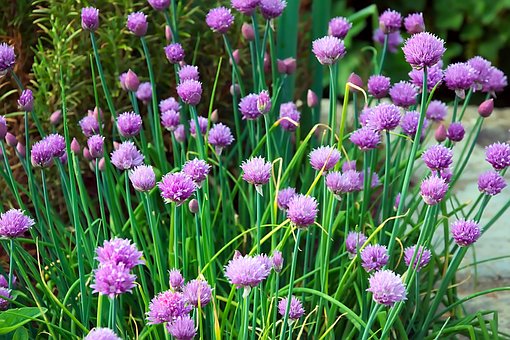10 Easy to Grow, Edible Plants For Your Garden
By Sophia Cooper
Lush greenery, flowers of endless hues, chirping birds, and buzzing bees: reminds you of a vacation to a remote countryside? Wouldn't it be best to experience these visual treats daily?
And, one could also reap health benefits like fresh air and chemical-free produce.
Learning the art of cultivation was a milestone in the evolution of humans.
From wandering food gatherers, we became food producers and started settling down. But unfortunately, with increased urbanization, the green cover of our cities has been dwindling continually.
Gardening can be one of the ways to make up for the loss. It requires effort and time, but the benefits are many. We not only get fresh fruits and veggies, but hard work also makes us fit too.
It is cost-effective, and in current challenging times, having your source of food is like a blessing. Check below the list of easy-growing plants that can spruce up the gardener in you.
1. Tomatoes
We add tomatoes to almost all of our dishes. You can eat them raw too. It is customary to include fresh pulpy ones to salads.
It takes around 60 to 80 days to get the fruit, from the timing of sowing seeds.
So many people prefer buying transplants from nurseries. The plant grows well in warm temperatures and soil. Thus, it is advisable to cover the soil surface with a plastic layer before planting.
It gives the required warmth that roots need. Another tip is to bury the transplanted stem deep into the soil. It ensures that there are more roots, and the plant is sturdy.
You need to keep an eye on the leaves at the bottom of the plant as they are more likely to get infected first.

2. Spinach
Spinach is one of the simple crops to grow. You can harvest it within six to eight weeks. The plant grows well in moderate temperatures. You can place it in shady places or under tall plants.
The general method is to get fresh seeds and sow them at a depth of one and a half inches. Water them regularly and keep the soil moist.
Then pluck the leaves when they are of the right size. You should not let them grow too big as they begin to taste bitter.
3. Cannabis
Cannabis or marijuana has many health benefits, and it has become legal to grow at home in many countries under specific regulations.
It is one of those plants that have separate male and female flowers.
So you need both types of seeds, and in Canada, you could get them at the Canada weed dispensary. The seeds germinate in moist and hot conditions.
You need to water them regularly and retain the moisture in the soil. Pruning helps in having more branches and buds.

4. Chives
Chives are a must-have for every garden. The plant is sturdy and bears beautiful flowers. It is advisable to sow the seeds in late spring, and they are ready to harvest by summer.
They keep pests away and aid in the growth of nearby plants. Chives tea made by boiling its leaves can control plant diseases such as powdery mildew.
Its strong roots can hold the soil and prevent erosion. You can use the leaves and tender stems for making a variety of dishes like salads, potatoes, soups, fish, etc.
The flower has a hot spicy flavor and is edible too. You can add them to juices and mojitos. It is also possible to freeze and store the leaves during winter.

5. Eggplant
Eggplant is a versatile vegetable. It comes to your rescue at the need of the hour. You can roast it, fry it, make a dip, a tart, and add it to your pizza, parmesan, and salads.
It is a tropical plant and perineal too. Implies if you have warm weather, you can harvest it throughout the year. Drip systems or soaker hoses are the best way to water these plants.
The soil should have moisture but shouldn't be soggy. The method of the plantation is by transplanting the seedlings, and the harvest period ranges around 65 - 80 days.
6. Cucumbers
Whether you like it in salads, juices, or curries, cucumbers are a summer staple. Children love it raw too, and the slices can be a perfect snack or side dish.
They are not clumsy and can be eaten with a fork. Cucumber plants require a moderately warm temperature and lots of water.
You can get seeds and sow them at a depth of 1 inch and give a space of 2 - 3 feet for each seed.
The soil has to be fertile, and you need to mulch it to retain moisture and keep pests at bay. The best part is that cucumbers are ready within 55-60 days of sowing.
7. Cilantro
We often use cilantro or coriander leaves for garnishing our curries, rice, and sausages. It gives a pleasant green color and has a grassy flavor.
One has to prepare the seeds by soaking them in water for 24-48 hours before sowing. The plant does not require intense sunlight. One needs to prune them often, to delay seeding.
But the plant can bolt quickly, and one has to sow new seeds once in six weeks.
8. Lavender
Most of us are familiar with lavender-based perfumes and talc. Its use as an essential oil is also widespread. Nowadays, upscale restaurants are including fresh lavender flowers and leaves in their recipes.
One can add dried buds and stem to herbs like oregano, thyme, rosemary, etc., and use it for garnishing and seasoning.
It is a perennial plant and requires a dry, sunny climate for growth. Also, the plant needs less water and lean soil.
If you live in a place with long summer and arid conditions, then it is super-easy to grow lavender in your garden.
9. Radish
It is a biennial crop that you can plant once in early spring and again in autumn. The entire plant is edible, and you can try out a variety of combinations in salads, roasts, curries, and soups.
The seeds require cooling and loose soil. Adding manure would boost germination and growth. The best part is you can get the product even within 25 days of sowing.
So it is very suitable for new gardeners who would love to have instant rewards for their efforts.
10. Bell Peppers
Bell peppers are among those manageable plants that a person would love to have. They need a lot of sunlight, sufficient water, and a small share of fertilizers.
Loamy soil that drains water and yet can retain moisture is the best choice. It is advisable to plant saplings from a nursery rather than sowing seeds, as they take a long time to germinate.
Depending on the variety of the crop, one can expect to get the fruit within 60 to 150 days.
Conclusion
Growing plants is inspiring, rewarding, and is much-needed for the wellness of our environment. Gardening can be an activity for the entire family.
Children love it, as they can go outside and get dirty. Another plus is that they have a better understanding of Science topics like photosynthesis, plant growth, ecology, etc.
For adults, it can be a stress-buster. So, Happy Gardening!
Author’s Bio:
Sophia Cooper Is a thorough and meticulous Content Analyst passionate about helping businesses succeed. She commits herself to continuous learning and focuses on sharing ideas and techniques learned from her experiences. She is a passionate writer who loves to write in a concise manner so that the information is helpful for everyone. Currently, she’s working with an "cbdandshrooms.com".


